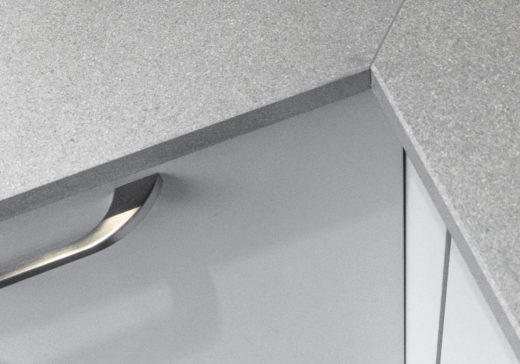Scratching the surface [or not]
Kitchens seem to be the thing everyone is talking about just now. I wrote about our remodeling recently and we have several friends who have gone or are going through the same process. It seems that, in the UK, the housing market has ground almost to a halt, as a result of the current political situation. This means that there is a lot more emphasis on extending and otherwise improving houses.
There were many decisions to make in the course of getting the kitchen done and we are now living with the results. At this point, we have not identified any decision that we regret. Actually, there is the reverse: certain things have a surprisingly positive impact on our use of the kitchen …
Our kitchen work was an expensive project overall and several aspects it seemed to have the potential for expensive errors. I wrote before about selecting a hob. That turned out OK, as did the other appliances. Things like to the overall color scheme were also fine. The surprisingly interesting choice, that we had to make, was the work surfaces.
A key reason for upgrading the kitchen was to improve its overall usability. That meant that we needed more worktop space. It needed to be higher than usual [we are all tall!] and it needed to be made from the right material. This last factor was the interesting one. We had previously had granite, which seemed OK, but was hard to keep clean [and look like it was clean!]. I think that the available options for worktop materials are:
- Laminated board – Very conventional, easy to work, reasonably priced and can look good. It is easily damaged by heat or scratching.
- Natural wood – Can look beautiful, but is quite expensive, fragile and needs maintenance.
- Natural stone, like granite – Also potentially attractive, but not cheap. Being a natural material, stone can have flaws that lead to catastrophic failure if they are thermally shocked. Staining is also a possibility.
- Molded materials – This approach gives an interesting, almost organic, look, as it is custom-molded and can incorporate sinks etc. Although it can resist heat to some extent, there are limits and damage is expensive to remedy.
- “Artificial stone” – This is made to be the best of all worlds by having the same resilience as natural stone, but with no flaws and no possibility for staining.
To me, (5) seemed the obvious choice. And it turned out that it was mostly a cheaper option than (2), (3) and (4), which made it even more attractive. The material we chose is called Dekton. It is made by taking finely ground stone and glass and applying a lot of heat and pressure to form large slabs. This process is called “sintering” [I just about recall learning about this 40 years ago when I was doing my degree in Materials Science].
 The guys providing the worktop came along after most of the units were installed and carefully made full-size templates for the worktops using corrugated plastic sheets. They took a couple of hours doing this. Then, they went away and, a few days later, returned with the customized worktops. The templates had been used to cut out the shapes from the big sheets of material using water-cooled diamond cutters. They were then carefully fitted into place. It seems that some other companies make the templates very quickly and then need to spend a long time adjusting the finished article.
The guys providing the worktop came along after most of the units were installed and carefully made full-size templates for the worktops using corrugated plastic sheets. They took a couple of hours doing this. Then, they went away and, a few days later, returned with the customized worktops. The templates had been used to cut out the shapes from the big sheets of material using water-cooled diamond cutters. They were then carefully fitted into place. It seems that some other companies make the templates very quickly and then need to spend a long time adjusting the finished article.
The worktops look good – they are gray with a matte finish. So far, we have not been able to stain the surface. Its imperviousness to heat makes working in the kitchen very low stress. A pot of boiling water? No problem. A pan out of the oven? A frying pan? No sweat. The surface is quite cool, so I am told it is good for making pastry, but I have yet to try that. When it was being installed, Libby asked one of the guys about its damage resistance. He assured her that it was almost impossible to harm. He took his knife out of his pocket and scored across the newly installed work surface. No mark at all. “It does not do your knife a lot of good” he said, sadly, looking at the slightly blunted blade.
One of our better decisions …

